
Illustrative Math Alignment: Grade 8 Unit 3
Functions and Volume
Lesson 11: Filling Containers
Use the following Media4Math resources with this Illustrative Math lesson.
| Thumbnail Image | Title | Body | Curriculum Topic |
|---|---|---|---|

|
Quizlet Flash Cards: Slope-Intercept Form | In this set of Quizlet flash cards test understanding of the slope-intercept form. Note: The download is the teacher's guide for using Media4Math's Quizlet Flash Cards. Related ResourcesTo see the complete Quizlet Flash Card Library, click on this link: https://media4math.com/Quizlet-Resources |
Slope-Intercept Form |

|
Test Prep Interactive Quiz--Linear Functions | Test Prep Interactive Quiz--Linear Functions
This is part of a collection of self-scoring interactive math quizzes on a variety of topics. To see the complete of these quizzes, click on this link. Note: The download is the teacher's guide.Related ResourcesTo see additional resources on this topic, click on the Related Resources tab.Quiz LibraryTo see the complete collection of Quizzes, click on this link.ary">click on this link. |
Graphs of Linear Functions, Slope and Slope-Intercept Form |

|
TI-84 Tutorial: Linear Functions | TI-84 Tutorial: Linear Functions
In this TI-84 tutorial we show how to graph linear functions and trace their coordinates. Note: The download is a PPT file. |
Graphs of Linear Functions |

|
Video Transcript: Algebra Applications: Linear Functions | Video Transcript: Algebra Applications: Linear Functions
Linear Expressions, Equations, and FunctionsLinear Expressions |
Applications of Linear Functions and Graphs of Linear Functions |

|
Video Transcript: Algebra Applications: Linear Functions, Segment 1: Introduction | Video Transcript: Algebra Applications: Linear Functions, Segment 1: Introduction
Linear Expressions, Equations, and FunctionsLinear Expressions |
Applications of Linear Functions and Graphs of Linear Functions |

|
Video Transcript: Algebra Applications: Linear Functions, Segment 2: Cycling | Video Transcript: Algebra Applications: Linear Functions, Segment 2: Cycling
Linear Expressions, Equations, and FunctionsLinear Expressions |
Applications of Linear Functions and Graphs of Linear Functions |

|
Video Transcript: Algebra Applications: Linear Functions, Segment 3: Oil Exploration | Video Transcript: Algebra Applications: Linear Functions, Segment 3: Oil Exploration
Linear Expressions, Equations, and FunctionsLinear Expressio |
Applications of Linear Functions and Graphs of Linear Functions |

|
Video Transcript: Algebra Applications: Linear Functions, Segment 4: Exercise | Video Transcript: Algebra Applications: Linear Functions, Segment 4: Exercise
Linear Expressions, Equations, and FunctionsLinear Expressions |
Applications of Linear Functions and Graphs of Linear Functions |

|
Video Transcript: Algebra Applications: Rational Functions, Segment 2: Biology | Video Transcript: Algebra Applications: Rational Functions, Segment 2: Biology
This is the transcript for the video of same title. Video contents: All living things take up a certain amount of space, and therefore have volume. They also have a certain amount of surface area. The ratio of surface area to volume, which is a rational function, reveals important information about the organism. Students look at different graphs of these functions for different organisms. |
Rational Expressions and Rational Functions and Equations |

|
Video Transcript: Algebra Nspirations: Linear Functions | Video Transcript: Algebra Nspirations: Linear Functions
This is the transcript for the video of same title. Video contents: In this program, internationally acclaimed mathematics educator Dr. Monica Neagoy, explores the nature of linear functions through the use TI graphing calculators. Examples ranging from air travel, construction, engineering, and space travel provide real-world examples for discovering algebraic concepts. All examples are solved algebraically and then reinforced through the use of the TI-Nspire. Algebra teachers looking to integrate hand-held technology and visual media into their instruction will benefit greatly from this series. Concepts explored: Standard form, slope-intercept form, point-slope form, solving linear equations |
Applications of Linear Functions and Graphs of Linear Functions |

|
Video Transcript: Algebra Nspirations: Linear Functions, 1 | Video Transcript: Algebra Nspirations: Linear Functions, Part 1
This is the transcript for the video of same title. Video contents: In this Investigation we look at linear models for objects moving at a constant speed. This is part of a collection of video transcript from the Algebra Nspirations video series. To see the complete collection of transcripts, click on this link. Note: The download is a PDF file. Video Transcript LibraryTo see the complete collection of video transcriptsy, click on this link. |
Applications of Linear Functions and Graphs of Linear Functions |

|
Video Transcript: Algebra Nspirations: Linear Functions, 2 | Video Transcript: Algebra Nspirations: Linear Functions, Part 2
This is the transcript for the video of same title. Video contents: In this Investigation we look at a linear regression for carbon dioxide emission data. This is part of a collection of video transcript from the Algebra Nspirations video series. To see the complete collection of transcripts, click on this link. Note: The download is a PDF file. Video Transcript LibraryTo see the complete collection of video transcriptsy, click on this link. |
Applications of Linear Functions and Graphs of Linear Functions |

|
Video Transcript: Geometry Applications--Volume of a Pyramid | Video Transcript: Geometry Applications--Volume of a Pyramid
This is the transcript for video entitled: "Geometry Applications--Volume of a Pyramid." This is part of a collection of video transcript from the Geometry Applications video series. To see the complete collection of transcripts, click on this link. Note: The download is a PDF file. Video Transcript LibraryTo see the complete collection of video transcriptsy, click on this link. Video LibraryTo see the complete collection of videos in the Video Library, click on this link. |
Pyramids |

|
Video Transcript: Geometry Applications: 3D Geometry | Video Transcript: Geometry Applications: 3D Geometry
This is the transcript for the video of same title. Video contents: In this program we explore the properties of three-dimensional figures. We do this in the context of two real-world applications. In the first, we look at the three-dimensional structure of Mayan pyramids. These stair-step structures provide a unique opportunity to also explore sequences and series. In the second application we look at the Shanghai Tower as an example of cylindrically shaped structures. |
3-Dimensional Figures and Applications of 3D Geometry |

|
Video Transcript: Geometry Applications: 3D Geometry, Segment 1: Introduction | Video Transcript: Geometry Applications: 3D Geometry, Segment 1: Introduction
This is the transcript for the video of same title. Video contents: We visit ancient Greece to learn about the Platonic Solids. This provides an introduction to the more general topic of three-dimensional figures. This is part of a collection of video transcript from the Geometry Applications video series. To see the complete collection of transcripts, click on this link. Note: The download is a PDF file. Video Transcript LibraryTo see the complete collection of video transcriptsy, click on this link. |
3-Dimensional Figures and Applications of 3D Geometry |

|
Video Transcript: Geometry Applications: 3D Geometry, Segment 2: Pyramids | Video Transcript: Geometry Applications: 3D Geometry, Segment 2: Pyramids
This is the transcript for the video of same title. Video contents: Rectangular Prisms. Mayan pyramids are essentially stacks of rectangular prisms. The volume of each successive level is a percentage decrease of its lower neighbor. This introduces the notion of a geometric sequence and series, including an infinite series. |
3-Dimensional Figures and Applications of 3D Geometry |

|
Video Transcript: Geometry Applications: 3D Geometry, Segment 3: Cylinders | Video Transcript: Geometry Applications: 3D Geometry, Segment 3: Cylinders
This is the transcript for the video of same title. Video contents: The Shanghai Tower in China is a stack of cylindrical shapes, where each successive layer is a percentage decrease of its lower neighbor. As with the previous section, this introduces the notion of a geometric sequence and series. |
3-Dimensional Figures and Applications of 3D Geometry |
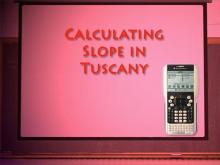
|
VIDEO: Algebra Applications: Linear Functions, Segment 2: Cycling | VIDEO: Algebra Applications: Linear Functions, Segment 2: Cycling
TopicLinear Functions DescriptionApplies linear functions to cycling, calculating hill grades and distances using slope formulas and graphing. Linear functions are fundamental in understanding mathematical relationships between two variables. The video demonstrates their application in real-life scenarios, enhancing comprehension of key concepts like slope, intercepts, and graphical representation. This foundational knowledge prepares students for more advanced mathematical topics. |
Special Functions and Applications of Linear Functions |
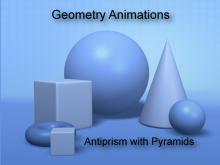
|
VIDEO: 3D Geometry Animation: Antiprisms 2 | VIDEO: 3D Geometry Animation: Antiprism Folding Out into Two Pyramids
This is part of a series of video animations of three-dimensional figures. These animations show different views of these figures: top, side, and bottom. Many of these figures are a standard part of the geometry curriculum and being able to recognize them is important. — CLICK THE PREVIEW BUTTON TO SEE THE VIDEO ANIMATION —Study these animations to learn the basic properties of these 3D figures. In particular, make a note of their sides, edges, and vertices. Look for any symmetries they have. Look for polygon shapes that are familiar. Finally, think of real-world examples that use these figures. Below we also include information about Platonic solids and 2D nets of these 3D figures. To get a better understanding of these 3D figures, study these basic forms. |
3-Dimensional Figures |

|
VIDEO: Algebra Applications: Linear Functions | VIDEO: Algebra Applications: Linear Functions
TopicLinear Functions |
Special Functions and Applications of Linear Functions |
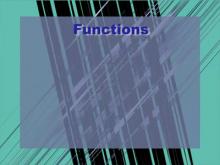
|
VIDEO: Algebra Applications: Linear Functions, 1 | VIDEO: Algebra Applications: Linear Functions, 1
TopicLinear Functions DescriptionIntroduces linear functions with examples like staircases, explaining slope, intercepts, and applications in real-world scenarios. Linear functions are fundamental in understanding mathematical relationships between two variables. The video demonstrates their application in real-life scenarios, enhancing comprehension of key concepts like slope, intercepts, and graphical representation. This foundational knowledge prepares students for more advanced mathematical topics. |
Special Functions and Applications of Linear Functions |

|
VIDEO: Algebra Applications: Linear Functions, 3 | VIDEO: Algebra Applications: Linear Functions, 3
TopicLinear Functions DescriptionUses linear regression to analyze US oil consumption trends, projecting future usage and potential impact of Alaskan oil production. Linear functions are fundamental in understanding mathematical relationships between two variables. The video demonstrates their application in real-life scenarios, enhancing comprehension of key concepts like slope, intercepts, and graphical representation. This foundational knowledge prepares students for more advanced mathematical topics. |
Special Functions and Applications of Linear Functions |

|
VIDEO: Algebra Applications: Linear Functions, 4 | VIDEO: Algebra Applications: Linear Functions, 4
TopicLinear Functions DescriptionModels maximum heart rate during aerobic exercise with linear equations, creating exercise charts for various age groups. Linear functions are fundamental in understanding relationships where one quantity depends linearly on another. This video provides clear examples and context that make the topic relevant and engaging. Linear equations often represent real-world scenarios, from economic trends to scientific measurements, helping students relate the math to everyday life. |
Special Functions and Applications of Linear Functions |
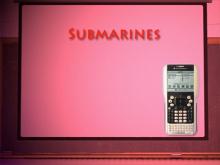
|
VIDEO: Algebra Applications: Rational Functions, 1 | VIDEO: Algebra Applications: Rational Functions, 1
TopicRational Functions DescriptionExplains submarine pressure and volume relationships using rational functions, illustrating depth impacts on vessel integrity and scuba safety. Relevance: This video provides a practical perspective on Rational Functions, making abstract concepts more accessible through real-world applications. |
Rational Expressions and Rational Functions and Equations |

|
VIDEO: Algebra Applications: Rational Functions, 2 | VIDEO: Algebra Applications: Rational Functions, 2
TopicRational Functions DescriptionExamines surface area to volume ratios in animals using rational functions, connecting these ratios to evolutionary adaptations in different climates. Relevance: This video provides a practical perspective on Rational Functions, making abstract concepts more accessible through real-world applications. |
Rational Expressions and Rational Functions and Equations |

|
VIDEO: Algebra Nspirations: Linear Functions, 1 | VIDEO: Algebra Nspirations: Linear Functions, 1
TopicLinear Functions DescriptionThis video explores linear functions, emphasizing their applications in motion contexts like airplane altitude. Key topics include slope, y-intercept, and function representation using tools like the TI-Nspire. Vocabulary includes linear function, slope-intercept form, and dependent variable. Applications include predicting motion scenarios. |
Applications of Linear Functions |

|
VIDEO: Algebra Nspirations: Linear Functions, 2 | VIDEO: Algebra Nspirations: Linear Functions, 2
TopicLinear Functions DescriptionIn this Math Lab explore the slopes of staircases. Compare the slope of a staircase when walking it in a straight path and compare it to the slope of a staircase walked in a staggered path. In this video, students explore the mathematical concept of linear functions, gaining a deeper understanding of its applications. The video emphasizes how this concept helps in problem-solving and real-world scenarios, bridging the gap between abstract mathematics and practical application. |
Applications of Linear Functions |

|
VIDEO: Algebra Nspirations: Linear Functions, 3 | VIDEO: Algebra Nspirations: Linear Functions, 3
TopicLinear Functions DescriptionThis video applies linear functions to environmental data analysis, predicting carbon dioxide levels using regression models. Key terms include regression, scatter plot, and slope. Applications highlight global warming trends and their impact using predictive analytics. |
Applications of Linear Functions |
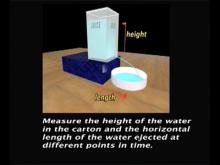
|
VIDEO: Algebra Nspirations: Linear Functions, 4 | VIDEO: Algebra Nspirations: Linear Functions, 4
TopicLinear Functions DescriptionIn this Math Lab explore water pressure by comparing the height of a column of water and the length of the corresponding jet of water. In this video, students explore the mathematical concept of linear functions, gaining a deeper understanding of its applications. The video emphasizes how this concept helps in problem-solving and real-world scenarios, bridging the gap between abstract mathematics and practical application. |
Applications of Linear Functions |
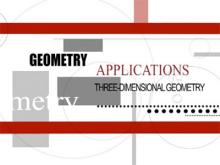
|
VIDEO: Geometry Applications: 3D Geometry | VIDEO: Geometry Applications: 3D Geometry
Topic3D Geometry |
3-Dimensional Figures and Applications of 3D Geometry |

|
VIDEO: Geometry Applications: 3D Geometry, 1 | VIDEO: Geometry Applications: 3D Geometry, 1
Topic3D Geometry DescriptionThis segment introduces Platonic solids, including tetrahedron, cube, and dodecahedron, emphasizing their congruent edges, vertices, and angles. It connects these geometric figures to both natural and man-made structures, setting the stage for exploring 3D geometry applications. This video offers a comprehensive look at the mathematical concepts behind 3D Geometry. Students will gain insights into practical applications and theoretical understanding of the topic, enhancing their ability to visualize and apply these concepts. |
3-Dimensional Figures and Applications of 3D Geometry |
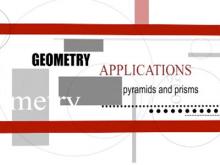
|
VIDEO: Geometry Applications: 3D Geometry, 2 | VIDEO: Geometry Applications: 3D Geometry, 2
Topic3D Geometry DescriptionThis segment explores pyramids, particularly Mayan and Egyptian structures, to distinguish rectangular and square bases. It discusses the volume of truncated pyramids using proportional relationships and introduces the concept of tiered volume reduction through geometric sequences. This video offers a comprehensive look at the mathematical concepts behind 3D Geometry. Students will gain insights into practical applications and theoretical understanding of the topic, enhancing their ability to visualize and apply these concepts. |
3-Dimensional Figures, Pyramids and Applications of 3D Geometry |
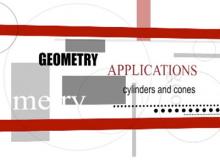
|
VIDEO: Geometry Applications: 3D Geometry, 3 | VIDEO: Geometry Applications: 3D Geometry, 3
Topic3D Geometry DescriptionThis segment examines cylinders, using the Shanghai Tower as a case study. It highlights how adjustments to height and radius affect volume and surface area, demonstrating these principles with geometric calculations and their architectural applications in energy efficiency. This video offers a comprehensive look at the mathematical concepts behind 3D Geometry. Students will gain insights into practical applications and theoretical understanding of the topic, enhancing their ability to visualize and apply these concepts. |
3-Dimensional Figures, Cylinders and Applications of 3D Geometry |

|
VIDEO: Geometry Applications: 3D Geometry, Pyramid Volume | VIDEO: Geometry Applications: 3D Geometry, Pyramid Volume
Topic3D Geometry |
Pyramids |
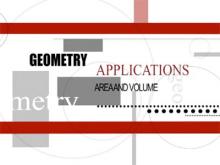
|
VIDEO: Geometry Applications: Area and Volume | VIDEO: Geometry Applications: Area and Volume
TopicArea and Volume |
Applications of Surface Area and Volume, Surface Area and Volume |

|
VIDEO: Geometry Applications: Area and Volume, 1 | VIDEO: Geometry Applications: Area and Volume, 1
TopicArea and Volume DescriptionThis segment explores the concept of density, using the Titanic to demonstrate buoyancy and the relationship between mass and volume. It introduces direct variation, rational functions, and how these principles apply to ship design for optimal floating capacity. |
Applications of Surface Area and Volume, Surface Area and Volume |

|
VIDEO: Geometry Applications: Area and Volume, 1 | VIDEO: Geometry Applications: Area and Volume, 1
TopicArea and Volume DescriptionThis segment explores the concept of density, using the Titanic to demonstrate buoyancy and the relationship between mass and volume. It introduces direct variation, rational functions, and how these principles apply to ship design for optimal floating capacity. |
Applications of Surface Area and Volume, Surface Area and Volume |

|
VIDEO: Geometry Applications: Area and Volume, 2 | VIDEO: Geometry Applications: Area and Volume, 2
TopicArea and Volume DescriptionThis segment focuses on surface area, using the Louvre Pyramid to highlight geometric tessellations and triangular net calculations. It explains the surface area formula for pyramids and how these calculations are applied in architectural design and material efficiency. |
Applications of Surface Area and Volume, Surface Area and Volume |
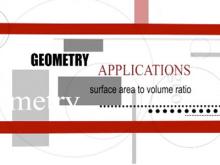
|
VIDEO: Geometry Applications: Area and Volume, 3 | VIDEO: Geometry Applications: Area and Volume, 3
TopicArea and Volume DescriptionThis segment explores the surface area-to-volume ratio using the Citigroup Building as an example. It discusses how this ratio impacts energy efficiency in buildings and compares it to natural examples like polar bears and snakes for context. |
Applications of Surface Area and Volume, Surface Area and Volume |

|
VIDEO: Ti-Nspire Mini-Tutorial, Video 14 | VIDEO: TI-Nspire CX Mini-Tutorial: Parallel and Perpendicular Lines
In this TI-Nspire CX tutorial explore the properties of parallel and perpendicular lines. Use a slider to define the slope and then graph parallel and perpendicular lines linked to this slider. Note: This video does not contain audio. |
Parallel Lines and Perpendicular Lines |

|
Worksheet: Crossword Puzzle--Parallel and Perpendicular Lines | Worksheet: Crossword Puzzle--Parallel and Perpendicular Lines
This is part of a collection of math worksheets that are crossword puzzles of math vocabulary. To see the complete worksheet collection on this topic, click on this link. Note: The download is a PDF file.Related ResourcesTo see additional resources on this topic, click on the Related Resources tab.Worksheet LibraryTo see the complete collection of Worksheets, click on this link. |
Parallel Lines and Perpendicular Lines |

|
Worksheet: TI-Nspire Mini-Tutorial: Exploring the Slope-Intercept form Using Sliders | Worksheet: TI-Nspire Mini-Tutorial: Exploring the Slope-Intercept form Using Sliders
This is part of a collection of math worksheets on the use of the TI-Nspire graphing calculator. Each worksheet supports a companion TI-Nspire Mini-Tutorial video. It provides all the keystrokes for the activity. To see the complete worksheet collection on this topic, click on this link. Note: The download is a PDF file.Related ResourcesTo see additional resources on this topic, click on the Related Resources tab.Worksheet LibraryTo see the complete collection of Worksheets, click on this link. |
Slope-Intercept Form |

|
Worksheet: TI-Nspire Mini-Tutorial: Exploring the Slope-Intercept form Using Sliders | Worksheet: TI-Nspire Mini-Tutorial: Exploring the Slope-Intercept form Using Sliders
This is part of a collection of math worksheets on the use of the TI-Nspire graphing calculator. Each worksheet supports a companion TI-Nspire Mini-Tutorial video. It provides all the keystrokes for the activity. To see the complete worksheet collection on this topic, click on this link. Note: The download is a PDF file.Related ResourcesTo see additional resources on this topic, click on the Related Resources tab.Worksheet LibraryTo see the complete collection of Worksheets, click on this link. |
Slope-Intercept Form |

|
Worksheet: TI-Nspire Mini-Tutorial: Graphing a Linear Function | Worksheet: TI-Nspire Mini-Tutorial: Graphing a Linear Function
This is part of a collection of math worksheets on the use of the TI-Nspire graphing calculator. Each worksheet supports a companion TI-Nspire Mini-Tutorial video. It provides all the keystrokes for the activity. To see the complete worksheet collection on this topic, click on this link. Note: The download is a PDF file.Related ResourcesTo see additional resources on this topic, click on the Related Resources tab.Worksheet LibraryTo see the complete collection of Worksheets, click on this link. |
Graphs of Linear Functions |

|
Worksheet: TI-Nspire Mini-Tutorial: Graphing a Linear Function | Worksheet: TI-Nspire Mini-Tutorial: Graphing a Linear Function
This is part of a collection of math worksheets on the use of the TI-Nspire graphing calculator. Each worksheet supports a companion TI-Nspire Mini-Tutorial video. It provides all the keystrokes for the activity. To see the complete worksheet collection on this topic, click on this link. Note: The download is a PDF file.Related ResourcesTo see additional resources on this topic, click on the Related Resources tab.Worksheet LibraryTo see the complete collection of Worksheets, click on this link. |
Graphs of Linear Functions |

|
Worksheet: TI-Nspire Mini-Tutorial: Graphing a Linear Inequality | Worksheet: TI-Nspire Mini-Tutorial: Graphing a Linear Inequality
This is part of a collection of math worksheets on the use of the TI-Nspire graphing calculator. Each worksheet supports a companion TI-Nspire Mini-Tutorial video. It provides all the keystrokes for the activity. To see the complete worksheet collection on this topic, click on this link. Note: The download is a PDF file.Related ResourcesTo see additional resources on this topic, click on the Related Resources tab.Worksheet LibraryTo see the complete collection of Worksheets, click on this link. |
Inequalities |

|
Worksheet: TI-Nspire Mini-Tutorial: Graphing a Linear Inequality | Worksheet: TI-Nspire Mini-Tutorial: Graphing a Linear Inequality
This is part of a collection of math worksheets on the use of the TI-Nspire graphing calculator. Each worksheet supports a companion TI-Nspire Mini-Tutorial video. It provides all the keystrokes for the activity. To see the complete worksheet collection on this topic, click on this link. Note: The download is a PDF file.Related ResourcesTo see additional resources on this topic, click on the Related Resources tab.Worksheet LibraryTo see the complete collection of Worksheets, click on this link. |
Inequalities |

|
Worksheet: TI-Nspire Mini-Tutorial: Graphing a Linear Inequality Using Sliders | Worksheet: TI-Nspire Mini-Tutorial: Graphing a Linear Inequality Using Sliders
This is part of a collection of math worksheets on the use of the TI-Nspire graphing calculator. Each worksheet supports a companion TI-Nspire Mini-Tutorial video. It provides all the keystrokes for the activity. To see the complete worksheet collection on this topic, click on this link. Note: The download is a PDF file.Related ResourcesTo see additional resources on this topic, click on the Related Resources tab.Worksheet LibraryTo see the complete collection of Worksheets, click on this link. |
Inequalities |

|
Worksheet: TI-Nspire Mini-Tutorial: Graphing a Linear Inequality Using Sliders | Worksheet: TI-Nspire Mini-Tutorial: Graphing a Linear Inequality Using Sliders
This is part of a collection of math worksheets on the use of the TI-Nspire graphing calculator. Each worksheet supports a companion TI-Nspire Mini-Tutorial video. It provides all the keystrokes for the activity. To see the complete worksheet collection on this topic, click on this link. Note: The download is a PDF file.Related ResourcesTo see additional resources on this topic, click on the Related Resources tab.Worksheet LibraryTo see the complete collection of Worksheets, click on this link. |
Inequalities |